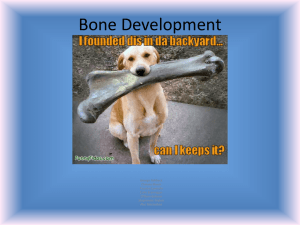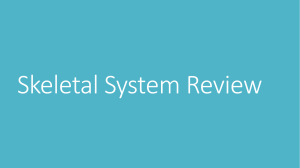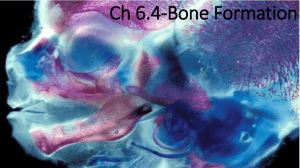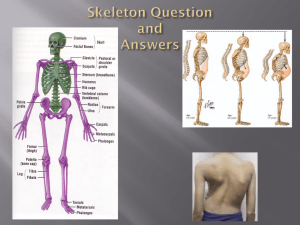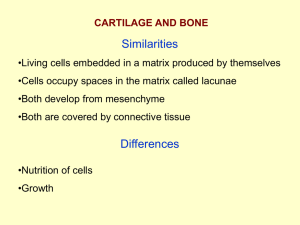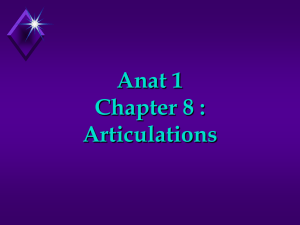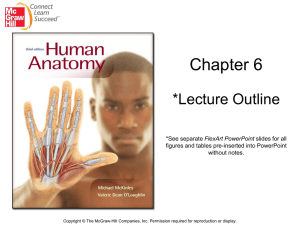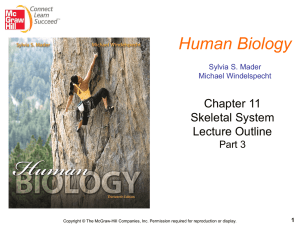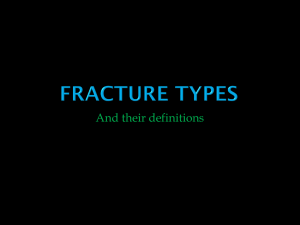Bone Growth and Development
advertisement
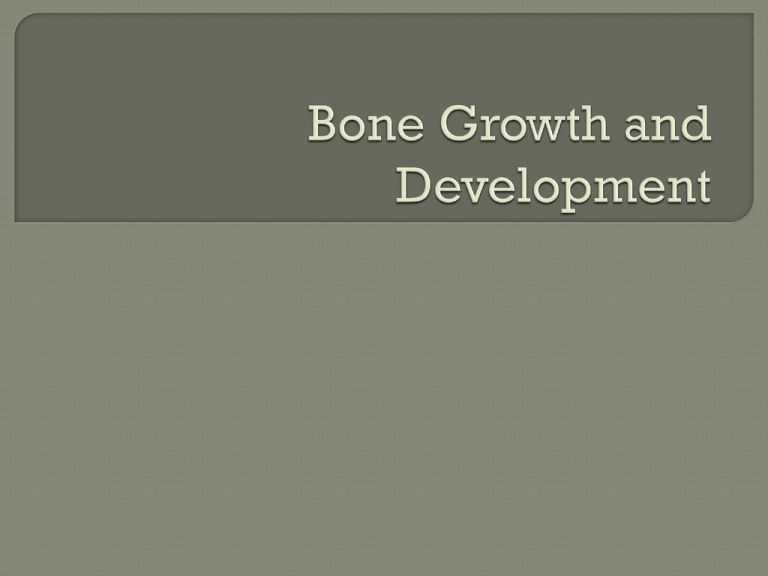
List types of bone Know the function of cells involved in bone growth Describe the two methods of bone formation in detail Explain the factors that affect bone growth Bone Resorption Osteo – greek for bone Osteogenesis – formation of bone Occurs both prenatally and postnatally Chondro- cartilage Two methods of bone formation • Endochondral Ossification • Intramembranous Ossification Endochondral Ossification • Ossification from a cartilage template Intramembranous Ossification Ossification in the absence of a cartilage template Compact bone – hard layer around the outside Spongy bone • Trabeculae • Spicules Medullary bone Metabolically Used active layer found in birds as an available source of calcium for egg shell production Osteoblasts – involved in the bone matrix production Osteocytes – mature osteoblasts; Responsible for maintenance of the bone matrix Chondroblasts/ Chondrocytes – Form cartilage that is associated with bone and can be required for bone growth • Long bones require cartilage before bone can be made Osteoclasts – involved in bone reabsorption (breakdown) and remodeling. Osteoblast/Osteocytes Bone lining cells – inactive cells found on the surface of bone that may serve as osteoblast precursors. Fibroblasts – part of connective tissue proper that is associated with synthesizing fibers and ground substance. • Ligaments and tendons Ossification that occurs with the replacement of cartilage with bone Prenatally a cartilaginous structure develops that will serve as the template for ossification Ossification of cartilage around the outside of the diaphysis Primary ossification center in the central portion of the diaphysis Secondary ossification center is established in the center of each epiphysis A thin layer of articular cartilage remains on the surface of each epiphysis to reduce friction Growth plate • Increases the length of long bones Growth of cartilage on the epiphyseal side Ossification of cartilage on the diaphyseal The growth of long bones will continue as long as the rate of cartilage growth remains faster than the rate of osteoblast invasion into the growth plate • It groaws until the growth plate ossifies Epiphyseal closure – fusion of the diaphysis and the epiphyses into a single bone Example is the break joint in lambs under 12 months of age Bone formation that occurs with the replacement of connective tissue with bone, but in the absence of cartilage Occurs in the formation of bones of the skull Responsible for increasing bone diameter During bone growth, osteoclasts are removing bone from the inner surface and enlarging the marrow cavity Balance between growth on the exterior and degredation on the interior Red marrow • Chief site of red blood cell formation Yellow marrow • Composed mainly of adipose tissue and is found in the medullary cavity of bones Is a balance between osteoblast formation and osteoclast degredation Bone remodling allows bones to adapt to stresses Heavily stressed bones becomes thicker and stronger • Increased muscle growth will result in increased bone growth at the protuberances of bone Remodling is usually initiated through osteoclast activation and removal of the bone matrix Followed by osteoblast production of new bone Vitamin and mineral deficiencies can result in abnormal bone growth Management strategies uncouple the balance of muscle, bone, and fat growth so that an immature skeleton must bear excess muscle and fat mass List types of bone Know the function of cells involved in bone growth Describe the two methods of bone formation in detail Explain the factors that affect bone growth

